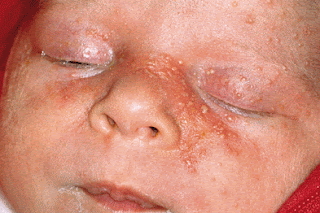Pathology
Biliary atresia results from inflammatory and progressive destruction of bile ducts, both extra- and intrahepatic, leading to fibrosis, biliary cirrhosis, and eventual liver failure. Biliary atresia has been classified into several types depending on the location and degree of atresia . The cause of BA is unknown, but the most common form is felt to be acquired rather than congenital. Infections, intrauterine and perinatal, metabolic disorders, genetic predisposition, and environmental exposures have all been implicated as potential causes, and each may be contributory in some cases. Biliary atresia also occurs in association with a variety of other congenital anomalies. In these cases, the condition is presumed to result from abnormalities in morphogenesis and is therefore not considered an acquired lesion.
Biliary atresia results from inflammatory and progressive destruction of bile ducts, both extra- and intrahepatic, leading to fibrosis, biliary cirrhosis, and eventual liver failure. Biliary atresia has been classified into several types depending on the location and degree of atresia . The cause of BA is unknown, but the most common form is felt to be acquired rather than congenital. Infections, intrauterine and perinatal, metabolic disorders, genetic predisposition, and environmental exposures have all been implicated as potential causes, and each may be contributory in some cases. Biliary atresia also occurs in association with a variety of other congenital anomalies. In these cases, the condition is presumed to result from abnormalities in morphogenesis and is therefore not considered an acquired lesion.
Clinical Features
The most consistent clinical feature of biliary atresia is cholestatic jaundice that appears in the second or third week of life, although some infants will be jaundiced from birth. Hypopigmented or acholic stools and darkened urine are strongly suggestive of biliary atresia. An enlarged and hard liver may be evident at the time of diagnosis, and with further progression of biliary cirrhosis, splenomegaly, ascites, and bruising from coagulopathy will occur.
The most consistent clinical feature of biliary atresia is cholestatic jaundice that appears in the second or third week of life, although some infants will be jaundiced from birth. Hypopigmented or acholic stools and darkened urine are strongly suggestive of biliary atresia. An enlarged and hard liver may be evident at the time of diagnosis, and with further progression of biliary cirrhosis, splenomegaly, ascites, and bruising from coagulopathy will occur.





























